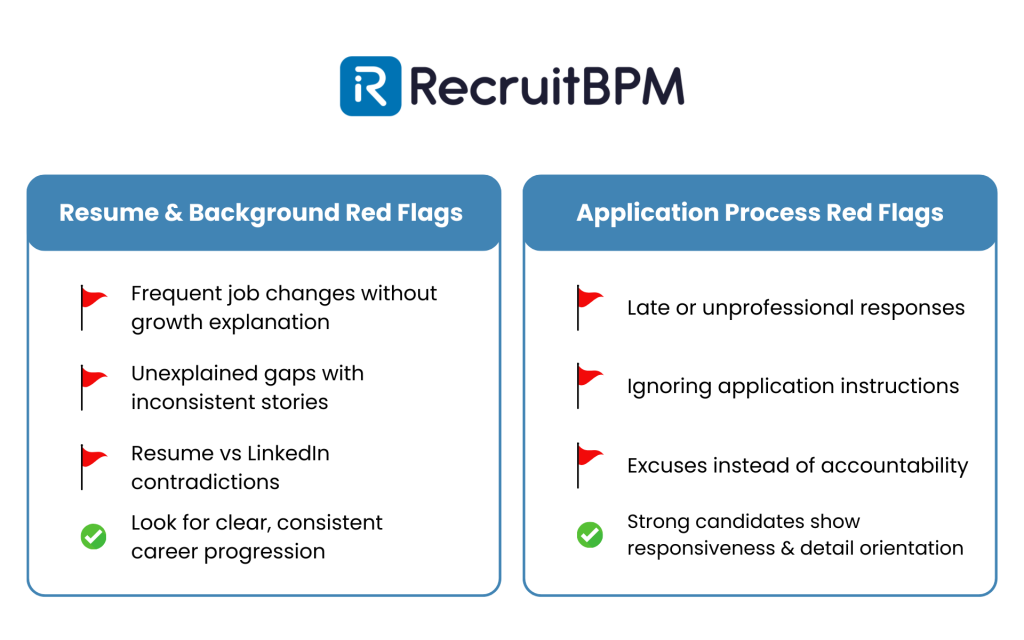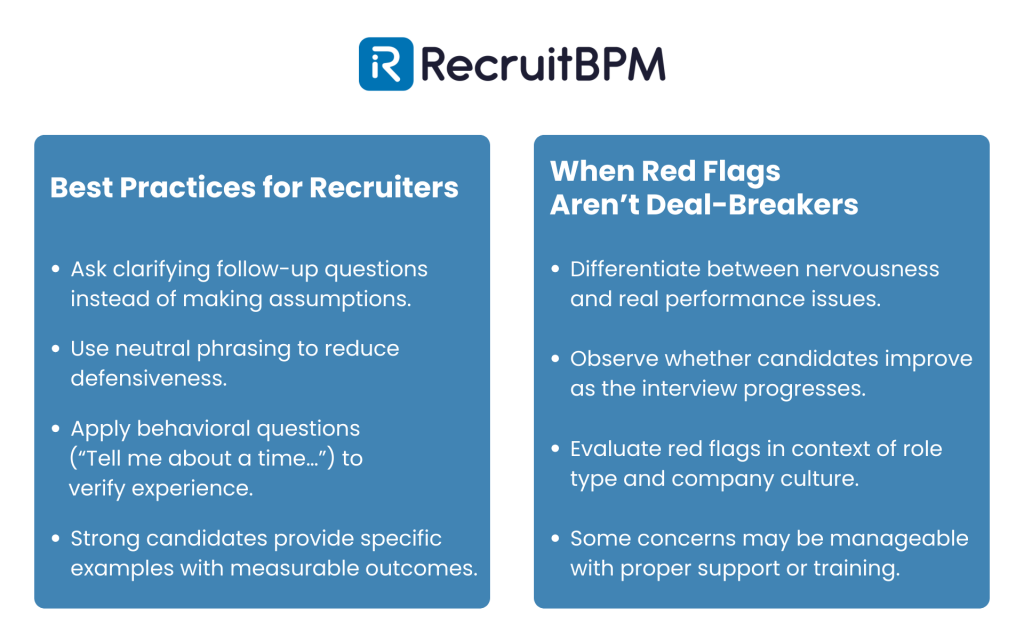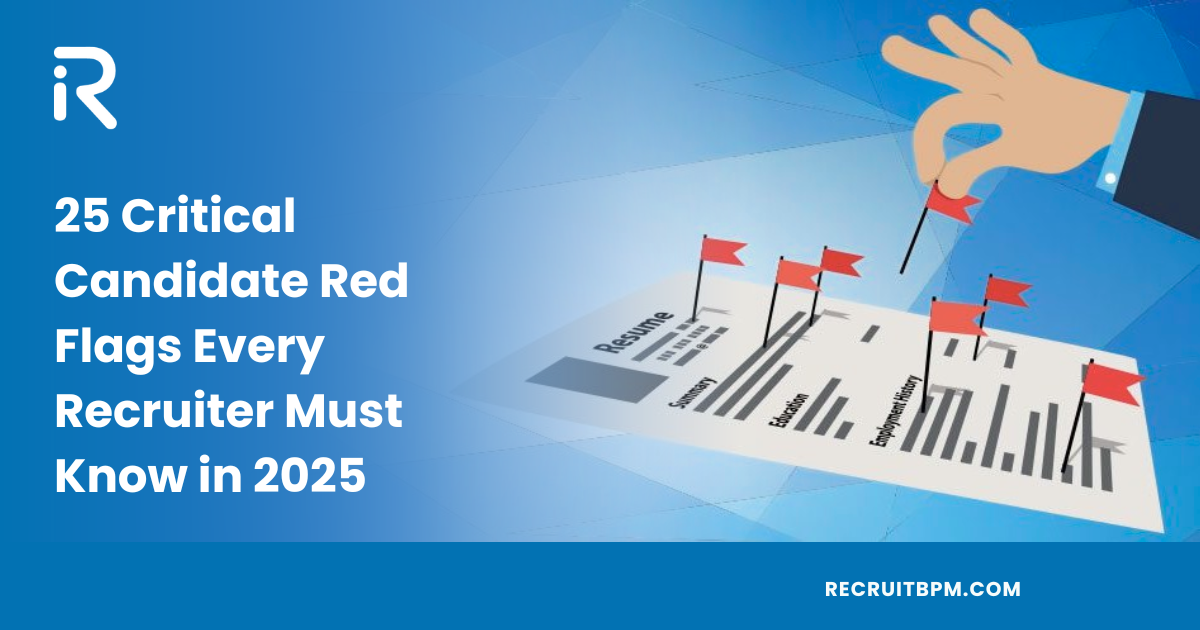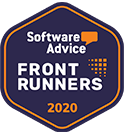Making the wrong hire can cost your agency up to $240,000 per executive position. Beyond financial impact, bad hires disrupt team dynamics, damage client relationships, and drain valuable resources. Smart recruiters know that spotting candidate red flags early transforms talent acquisition from guesswork into a strategic advantage.
Why Spotting Candidate Red Flags Matters?
Every recruitment professional faces this challenge: candidates who look perfect on paper but create problems once hired. The difference between thriving agencies and struggling ones often comes down to red flag detection skills.
The hidden costs of bad hires extend far beyond salary:
- 73% of companies report decreased team productivity after poor hiring decisions
- Average replacement costs range from 50% to 200% of annual salary
- Client satisfaction drops 23% when the wrong people manage relationships
Modern talent acquisition demands more than gut instinct. You need systematic approaches that identify warning signs before they become expensive mistakes. The key lies in understanding what separates genuine concerns from nervous interview behavior.
Your screening process becomes your competitive advantage. When you consistently identify quality candidates while competitors struggle with turnover, clients notice. They trust agencies that deliver reliable talent pipelines.
Pre-Interview Red Flags to Watch For

Smart recruiters start evaluating candidates before meeting them. Application materials and initial communications reveal crucial insights about work habits and attention to detail.
Resume Warning Signs
Frequent job changes without clear reasons represent the most common red flag in staffing. While career mobility isn’t inherently negative, patterns matter. Three jobs in two years without logical progression suggest instability.
Look for candidates who explain transitions clearly. “Promoted to regional role” differs vastly from “seeking new opportunities” repeated multiple times. Quality candidates articulate growth stories rather than making excuses.
Unexplained employment gaps require investigation, not automatic dismissal. The best approach involves direct questions during screening calls. Legitimate reasons include education, family care, or industry downturns.
Red flags emerge when candidates become defensive or provide inconsistent explanations. One month they mention traveling, next they claim consulting work. Honest candidates maintain consistent narratives.
Inconsistent information across platforms signals deeper problems. LinkedIn profiles that contradict resumes suggest carelessness or deception. Dates, job titles, and company names should align perfectly.
Modern recruitment tools make verification simple. Cross-reference information systematically rather than assuming accuracy. Small discrepancies often indicate larger integrity issues.
Application Process Red Flags
Late or unprofessional email responses predict future communication problems. Candidates who take three days to respond to urgent requests rarely improve after hiring. Professional standards matter from the first contact.
Exception: Clearly communicated delays with valid reasons. “Responding Tuesday after the client deadline” shows consideration. Complete silence or casual “been busy” responses raise concerns.
Failure to follow application instructions demonstrates attention to detail problems. When job postings request specific document formats or subject lines, compliance becomes a basic competency test.
This red flag particularly impacts staffing agencies. Candidates who cannot follow simple instructions struggle with client requirements and placement protocols.
Interview Red Flags: Behavioral Warning Signs
Face-to-face interactions reveal character traits that resumes cannot capture. Body language, communication style, and professional demeanor predict workplace behavior patterns.
Communication Red Flags
Arriving late without notice immediately signals time management problems. Successful placements require reliability. Candidates who cannot manage interview logistics struggle with client meetings and deadlines.
Smart candidates arrive 10-15 minutes early and communicate proactively about any delays. They understand that punctuality reflects respect for your time and professional standards.
Poor eye contact and body language can indicate various issues. While cultural differences exist, consistent patterns matter more than isolated moments. Candidates who avoid engagement throughout interviews may struggle in client-facing roles.
Look for improvement as conversations progress. Initial nervousness that resolves suggests normal interview anxiety. Persistent discomfort might indicate deeper communication challenges.
Rambling or off-topic responses reveal unclear thinking processes. Quality candidates organize their thoughts before speaking and stay focused on the questions asked. Excessive tangents suggest difficulty with structured communication.
Test this by asking specific behavioral questions. Strong candidates provide clear examples with logical flow. Weak responses jump between topics without connecting to the original question.
Attitude and Professionalism Red Flags
Lack of preparation or company research shows insufficient interest in opportunities. Candidates should understand your agency’s specialties, client base, and recent achievements before interviews begin.
Basic preparation includes reviewing your website, understanding service offerings, and preparing relevant questions. Candidates who ask “What does your company do?” demonstrate poor research habits.
Inappropriate dress or grooming reflects judgment about professional standards. While dress codes vary by industry, interview attire should err toward formality rather than casualness.
This becomes particularly important for client-facing roles. Candidates who cannot dress appropriately for interviews rarely improve for client meetings.
Showing up too early (15+ minutes) creates awkward situations and suggests poor boundary awareness. While punctuality matters, excessive earliness can disrupt schedules and indicate social skill gaps.
Dishonesty and Integrity Issues
Exaggerating skills or experience represents the most serious interview red flag. According to recent surveys, 63% of hiring managers consider dishonesty their primary concern during candidate evaluation.
Test claimed competencies with specific questions. Ask for detailed examples and concrete results. Legitimate experience produces clear, consistent answers. Exaggerated claims create vague responses and defensive behavior.
Inconsistent stories about work history often emerge through follow-up questions. Strong candidates maintain consistent narratives when asked about the same experiences from different angles.
Document key details during interviews and verify through reference checks. Honest candidates welcome verification while dishonest ones avoid or delay the process.
Motivation and Cultural Fit Red Flags
Understanding candidate motivations helps predict long-term success and retention rates. Money-focused individuals rarely develop into loyal team members or effective client partners.
Money-Focused Warning Signs
Only asking about salary and benefits indicates transactional relationships with work. Quality candidates balance compensation questions with role, growth, and culture inquiries.
Watch for candidates who dominate conversations with pay discussions. They often view positions as stepping stones rather than career opportunities.
Unrealistic compensation expectations suggest poor market awareness or inflated self-assessment. Candidates demanding 40% increases without corresponding skill development create budget problems and unrealistic client expectations.
Research market rates thoroughly and address unrealistic expectations directly. Quality candidates appreciate honest feedback and adjust expectations accordingly.
Team Collaboration Red Flags
Only using “I” instead of team accomplishments reveals collaboration problems. While individual contributions matter, successful placements require team players who support collective goals.
Balanced candidates discuss both personal achievements and team successes. They articulate their role in group efforts clearly without taking excessive credit or avoiding responsibility.
Blaming others for past failures predicts future accountability problems. Everyone experiences setbacks, but mature professionals accept responsibility and focus on lessons learned rather than fault assignment.
Technical and Skills-Based Red Flags
Skills verification separates competent candidates from resume writers. Technical roles require demonstrated competency rather than claimed expertise.
Competency Warning Signs
Cannot demonstrate claimed technical skills through practical examples or specific discussions. Quality candidates explain complex concepts clearly and provide relevant examples from their experience.
Use role-playing exercises or hypothetical scenarios to test claimed abilities. Strong candidates think through problems systematically while weak ones provide generic responses.
Defensive when asked about knowledge gaps suggests ego problems and resistance to learning. Everyone has limitations, but quality candidates acknowledge gaps and express willingness to develop missing skills.
Post-Interview Red Flags
Candidate behavior after interviews provides valuable insights into professionalism and genuine interest levels. Follow-up communications reveal character traits that formal interviews might miss.
Follow-up Behavior
No thank-you communication shows a lack of professional courtesy and genuine interest. Quality candidates send brief, personalized messages within 24 hours expressing appreciation for the time invested.
Pushy or impatient follow-ups indicate poor boundary awareness and unrealistic expectations. While enthusiasm matters, excessive contact or demands for immediate decisions create uncomfortable dynamics.
Unreasonable negotiation tactics emerge after initial offers. Candidates who dramatically change requirements or make excessive demands often continue problematic behavior after hiring.
How to Address Red Flags During Interviews?

Effective red flag management requires structured approaches rather than intuitive responses. Professional recruiters develop systematic methods for investigating concerns while maintaining candidate relationships.
Best Practices for Recruiters
Ask follow-up questions for clarification when potential issues arise. Many apparent red flags resolve through additional information or context. Give candidates opportunities to explain unusual circumstances.
Frame questions neutrally: “Help me understand the gap between June and September” works better than “Why weren’t you working?” Neutral phrasing encourages honest responses rather than defensive reactions.
Use behavioral interview techniques to verify claimed experiences. “Tell me about a time when” questions reveal actual competencies and character traits more effectively than hypothetical scenarios.
Quality candidates provide specific examples with clear outcomes. Weak responses stay general and avoid measurable results.
When Red Flags Aren’t Deal-Breakers
Distinguishing nerves from genuine problems requires experience and patience. Interview anxiety affects many quality candidates, particularly those changing career directions or re-entering the workforce.
Look for improvement throughout conversations. Nervous candidates typically relax as interviews progress. Persistent problems suggest deeper issues requiring investigation.
Context-dependent evaluation considers role requirements and company culture. Communication red flags matter more for client-facing positions than internal technical roles.
Red Flags vs. False Alarms: What Not to Judge
Bias awareness prevents quality candidates from being eliminated for irrelevant characteristics. Professional recruiters separate genuine concerns from personal preferences or cultural misunderstandings.
Avoiding Bias in Candidate Assessment
Introversion isn’t a red flag despite common misconceptions. Many excellent employees prefer listening to speaking and thoughtful responses over quick answers. Judge communication effectiveness rather than style preferences.
Cultural communication differences require sensitivity and understanding. Direct eye contact expectations vary across cultures. Evaluate comfort level and professional competency rather than specific behavioral patterns.
Personal circumstances affecting behavior deserve consideration. Recent life changes, health issues, or family situations might create temporary stress without indicating permanent problems.
Building a Red Flag Detection System
Systematic approaches produce more consistent results than intuitive methods. Professional agencies develop structured processes that improve accuracy while reducing bias.
Creating Interview Scorecards
Structured evaluation criteria ensure consistent assessment across all candidates and interviewers. Define specific behaviors and responses that constitute red flags for each role category.
Rate candidates on predetermined scales rather than making binary decisions. This approach allows for nuanced evaluation and comparative analysis.
Team-based evaluation processes reduce individual bias and improve decision accuracy. Multiple perspectives reveal patterns that single interviewers might miss.
Using Technology to Spot Red Flags
Background check integration streamlines verification processes and reveals discrepancies quickly. Modern platforms automate reference checking and credential verification.
Skills assessment platforms provide objective competency measurement. Technical tests and behavioral assessments complement interview observations with quantifiable data.
AI-driven recruitment platforms analyze communication patterns and predict success rates based on historical data. These tools enhance human judgment rather than replacing recruiter expertise.
Industry-Specific Candidate Red Flags
Staffing agencies face unique challenges that require specialized red flag awareness. Client service demands and relationship management create specific competency requirements.
Staffing Agencies and Recruitment Firms
Lack of understanding client needs becomes apparent through vague responses about previous placements or client relationships. Quality candidates articulate how they identified requirements and matched appropriate talent.
Poor relationship-building skills manifest through transactional communication styles or an inability to discuss long-term client partnerships. Successful recruiters develop trust-based relationships that extend beyond individual placements.
Unrealistic placement expectations suggest poor market awareness or inexperience with candidate assessment. Quality recruiters understand timing, skill availability, and market conditions affecting placement success.
Executive Search and Corporate Recruiting
Leadership red flags require sophisticated evaluation methods. Executive candidates must demonstrate strategic thinking, team development capabilities, and stakeholder management skills.
Strategic thinking assessment involves discussing complex business challenges and evaluating response sophistication. Quality executives provide structured approaches rather than generic solutions.
Conclusion: Making Informed Hiring Decisions
Red flag detection transforms recruitment from reactive hiring to strategic talent acquisition. Professional agencies that master these skills consistently outperform competitors and deliver superior client outcomes.
Key Takeaways for Recruiters
Balance red flags with candidate potential through systematic evaluation rather than instinctive reactions. Document observations and verify concerns through multiple sources before making final decisions.
Trust your instincts while staying objective by combining intuitive responses with structured assessment methods. Experience provides valuable insights that formal processes might miss.
Professional growth requires continuous refinement of evaluation skills. Learn from hiring mistakes and successful placements to improve future decision-making.
Next Steps: Implementing Red Flag Detection
Training your recruitment team ensures consistent application of red flag identification across all hiring activities. Regular training sessions and case study discussions improve team competency.
Creating standardized processes reduces variability and improves decision quality. Document effective methods and share successful approaches throughout your organization.
Continuous improvement in hiring quality requires ongoing measurement and adjustment. Track placement success rates and identify patterns that predict long-term performance.
The future of talent acquisition belongs to agencies that combine human insight with systematic processes. Master red flag detection and transform your recruitment outcomes.

















